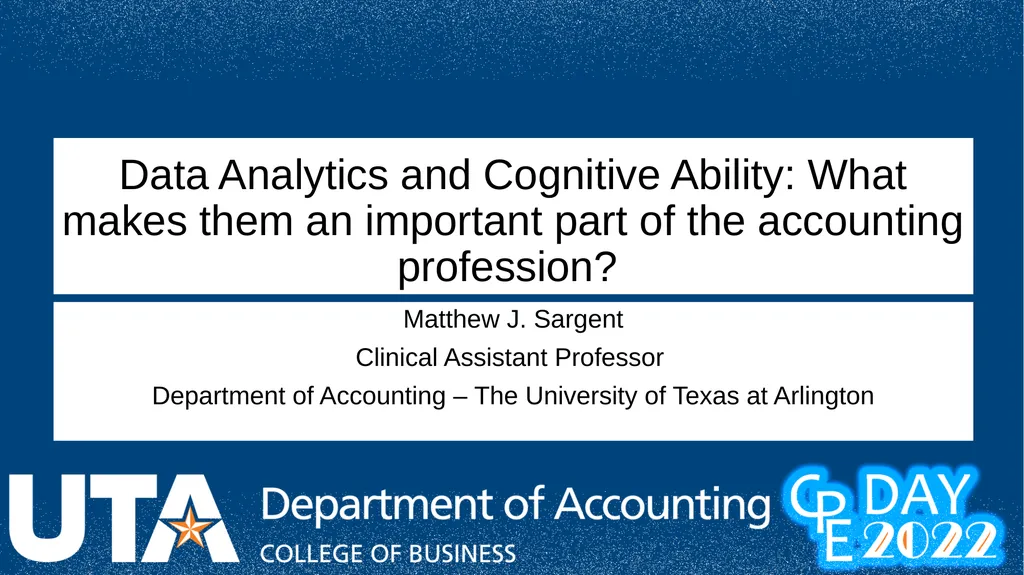Data Analytics and Cognitive Ability: What makes
Author : karlyn-bohler | Published Date : 2025-11-01
Description: Data Analytics and Cognitive Ability What makes them an important part of the accounting profession Matthew J Sargent Clinical Assistant Professor Department of Accounting The University of Texas at Arlington What are they Understand
Presentation Embed Code
Download Presentation
Download
Presentation The PPT/PDF document
"Data Analytics and Cognitive Ability: What makes" is the property of its rightful owner.
Permission is granted to download and print the materials on this website for personal, non-commercial use only,
and to display it on your personal computer provided you do not modify the materials and that you retain all
copyright notices contained in the materials. By downloading content from our website, you accept the terms of
this agreement.
Transcript:Data Analytics and Cognitive Ability: What makes:
Data Analytics and Cognitive Ability: What makes them an important part of the accounting profession? Matthew J. Sargent Clinical Assistant Professor Department of Accounting – The University of Texas at Arlington What are they? Understand the basics of data analytics and big data What is Big Data Big Data is defined as datasets that are too large and complex for businesses’ existing systems to handle using their traditional capabilities to capture, store, manage and analyze these data sets. Big Data is no different than traditional data because if it can’t be analyzed to provide insight and help with decision making, its value is limited. What is Big Data The four V’s—volume, velocity, veracity and variety—are often used to represent the defining features of Big Data. Volume refers to the massive amount of data involved. Velocity refers to the fact that the data comes in at quick speeds or in real time, such as streaming videos and news feeds. Variety refers to unstructured and unprocessed data, such as comments in social media, emails, global positioning system (GPS) measurements, etc. Veracity refers to the quality of the data including extent of cleanliness (without errors or data integrity issues), reliability and representationally faithful. What is Data Analytics Data Analytics is defined as the science of examining raw data, removing excess noise, and organizing the data with the purpose of drawing conclusions for decision making. Data analytics often involves the technologies, systems, practices, methodologies, databases, and applications used to analyze diverse business data to help organizations make sound and timely business decisions. What is Data Analytics The intent of Data Analytics is to transform raw data into valuable information. Data analytics is used in today’s business world by examining the data to generate models for predictions of patterns and trends. When used effectively, data analytics gives us the ability to search through large and unstructured data to identify unknown patterns or relationships, which when organized, is used to provide useful information. What is the value of Big Data and Data Analytics 85% of CEOs put a high value on Data Analytics. 80% of CEOs place data mining and analysis as the second-most important strategic technology. Business analytics tops CEO’s list of priorities. Data Analytics could generate up to $3 trillion in value per year. With a wealth of data on their hands, companies are empowered by using data analytics to discover various patterns, investigate












